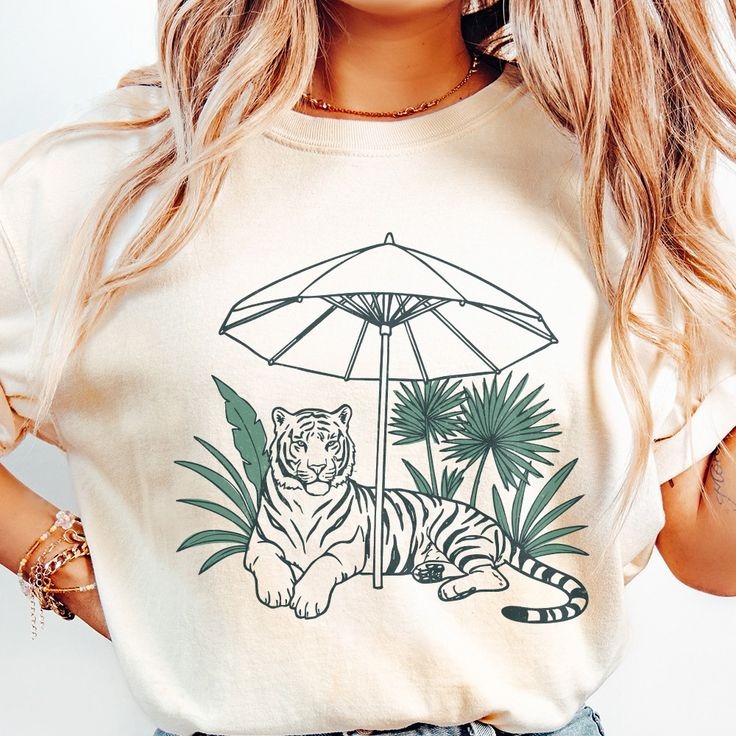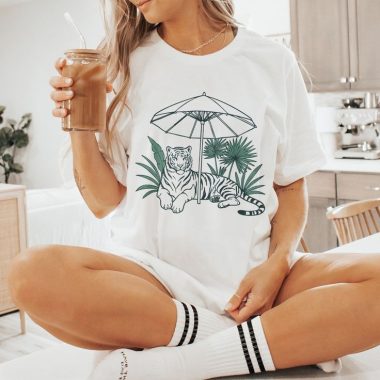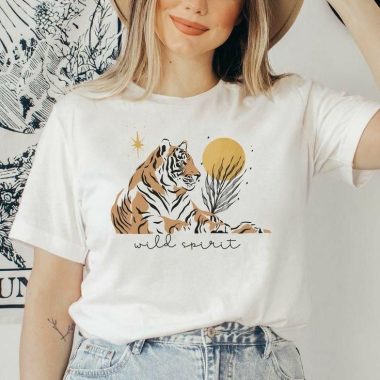Embracing Elegance and Expression
Fashion is more than fabric stitched together. It is a living dialogue between wearer and world, an ever‑shifting expression of identity, culture, and creativity. From the first animal skins draped for warmth to today’s cutting‑edge smart textiles, clothing has been both necessity and luxury, survival and spectacle. In this expansive journey through fashion’s myriad facets, we will trace its ancient origins, examine its role as social barometer, celebrate its moments of radical transformation, confront its environmental challenges, and glimpse the innovations that will shape its future. Along the way we will discover how garments become symbols, how trends emerge and fade, and how the individual story woven into every seam defines our shared history.
Origins of Ornamentation
Human beings clothed themselves for protection long before they adorned themselves for beauty. Early practical coverings of leaves, bark, and animal hide evolved into purposeful embellishments as sewable textiles emerged in Neolithic settlements. Rough‑spun wool and flax transformed into simple woven cloth, and with the mastery of spindles and looms, garments became canvases for symbolic motifs. Patterns of spirals and geometric forms recorded cosmic beliefs, clan affiliations, and rites of passage. In ancient Anatolia and Egypt, textile production was a sacred art, its secrets jealously guarded by priesthoods. The earliest dyers coaxed vibrant reds from madder root and deep blues from indigo, sacrifice and ceremony intertwined in every colored thread. These ancestral textiles remind us that clothing has always carried meaning beyond the material, articulating rituals and forging communal bonds long before the term fashion existed.
Clothing as Cultural Chronicle
As civilizations rose and fell, their attire documented shifting values and power structures. In classical Greece flowing cloaks and tunics expressed ideals of harmony and proportion, reflecting the philosophical pursuit of balance. Roman togas signified citizenship, their folds and drapes denoting status within an intricate social hierarchy. In imperial China the color yellow and dragon motifs were reserved for the emperor, while under the sumptuary laws of medieval Europe only nobles could wear certain furs or silks. Each region developed its own sartorial grammar, from the intricate kimonos of Japan—each stitch telling a seasonal story—to the vibrant woven textiles of West Africa that celebrated lineage and oral traditions. Through conquest and trade these distinct languages of dress mixed and mingled, giving birth to new hybrids: Persian tapestry patterns on Moorish court robes, Central Asian ikat designs on European furnishing fabrics. Culture and cloth entwined, weaving a global tapestry of references that carries echoes of ancient exchange into today’s eclectic runways.
Revolution and Resistance
Periods of upheaval have repeatedly ignited fashion revolutions that challenged convention and redefined norms. The Renaissance revived classical drapery and sumptuous ornamentation, yet beneath the silk and taffeta a new humanism questioned the divine right of monarchs and the rigidity of feudal structures. The French Revolution dismantled aristocratic dress codes—tricolor cockades and simple sans‑culottes trousers became symbols of equality—while the Industrial Revolution mechanized production, democratizing access to ready‑made garments even as it centralized labor in grim factories. In the roaring twenties flappers liberated the female silhouette, shedding restrictive corsetry in favor of dropped waists and shorter hemlines that matched their exuberant rejection of Victorian prudery. Each revolt in dress held a dual edge, both aesthetic and political, as style became a potent tool for those who sought to assert autonomy, challenge hierarchies, or herald a new era.
The Democratization of Style
The twentieth century accelerated the democratization of fashion. The birth of the department store made diverse brands and styles available to the middle classes, while Hollywood and photographic magazines projected glamorous ideals across continents. Haute couture from Paris and Milan remained the pinnacle of artistry and exclusivity, but off‑the‑peg collections introduced runway silhouettes to broader audiences at accessible prices. Mail‑order catalogs and, later, television advertisements invited consumers to curate wardrobes of seasonal trends, while youth subcultures—from beatniks to mods to punks—reclaimed clothing as an act of self‑definition. Street style photography emerged as its own genre, celebrating creativity outside salon walls, and the line between designer and consumer began to blur. This democratization gave rise to fast‑fashion conglomerates, able to translate catwalk looks into high‑street offerings within weeks, meeting insatiable demand but also sowing seeds of overconsumption.
Sustainability and Social Responsibility
Faced with mounting evidence of environmental degradation and exploitative labor practices, the fashion industry now reexamines its priorities. The traditional linear model—take, make, waste—has proven unsustainable. Water‑intensive dyeing, synthetic microfibers polluting oceans, and landfills overflowing with discarded clothing have prompted both brands and consumers to embrace more responsible approaches. Organic cotton fields, recycled polyester from ocean plastic, and regenerative wool production offer alternatives that reduce ecological footprints. Fair trade certifications help ensure that garment workers receive livable wages and safe conditions. Circular economies envision garments designed for disassembly and recycling, extending their life cycles and keeping materials in use. Meanwhile resale platforms and clothing rental services challenge the notion of ownership, promoting a culture that values quality and longevity over transient novelty. This growing consciousness transforms fashion from a passive cycle of trends into an active force for positive change, asking wearers to consider not only how they look, but how their choices shape communities and ecosystems far beyond the fitting room.
Technology as Tailor’s Apprentice
Innovation in materials and manufacturing promises to revolutionize how clothing is conceived and produced. Smart textiles embedded with sensors can monitor health metrics, adapt insulation based on temperature, or glow with programmable LEDs. 3D knitting machines craft entire garments seamlessly, minimizing waste, while digital textile printing allows infinite customizable patterns printed on demand. Virtual and augmented reality reshape retail experiences, letting shoppers try on outfits in immersive environments without ever touching a hanger. Blockchain offers supply chain transparency, verifying the provenance of every fiber from field to finished product, and artificial intelligence algorithms analyze personal style preferences to recommend bespoke designs. Even the atelier itself is evolving: robotic sewing arms collaborate with craftspeople, marrying precision with the human touch. These technologies not only optimize efficiency but also open new realms for creativity, questioning the divide between handcraft and high tech.
The Artistry of Collaboration
Contemporary fashion thrives on collaborations that transcend traditional boundaries. Designers partner with artists, musicians, and architects to reinterpret garments as multimedia installations. Limited‑edition capsule collections between heritage brands and streetwear labels harness nostalgia and novelty, generating intense anticipation and dialogue. Musicians premiere album covers and stage costumes in tandem, transforming the concert into a live runway. Cross‑industry alliances with sportswear giants bring performance science into couture, crafting garments that excel in both form and function. Even film and gaming intersect with fashion, as digital avatars don garments designed by real‑world brands, and cinematic characters inspire mainstream trends. Collaboration fosters cross‑pollination of ideas, enriching fashion with perspectives that span disciplines, demographics, and geographies.
Fashion as Personal Narrative
In the end, fashion is a mirror held up to the self. Each individual assembles wardrobe choices like chapters in an unfolding story. A well‑worn leather jacket might speak of youthful rebellion and countless road trips. A meticulously tailored suit can convey professionalism, aspiration, or even armor against imposter syndrome. An heirloom scarf threads family history across decades. As social norms evolve, clothing becomes a means to explore gender fluidity, cultural heritage, or intersectional identities. Customization and DIY aesthetics empower wearers to become co‑creators, embellishing off‑the‑rack pieces with patches, embroidery, or hand‑stitching. In this participatory era, the wearer is as integral to design as the atelier, and the line between audience and artist blurs.
Global Currents and Local Roots
While fashion has gone global, local traditions continue to anchor it. Indigenous weavers in South America preserve age‑old backstrap‑loom techniques, embedding textiles with cosmological symbols. North African artisans hand‑dye fabrics with centuries‑old resist methods. Scandinavian brands champion minimalist design inspired by elemental landscapes, even as they source eco‑friendly fibers from regional farms. Fashion weeks in Lagos, Seoul, and São Paulo showcase emerging talents who reinterpret global trends through local lenses. This interplay ensures that while Western capitals often dominate headlines, the true richness of fashion lies in its diversity of cultural sources. Respectful exchange, not appropriation, becomes the watchword, as designers acknowledge and compensate the communities that inspire them, weaving equity into the industry’s evolving narrative.
Moments of Reinvention
Throughout its history, fashion has reinvented itself at pivotal junctures. The mid‑century shift from tailored postwar austerity to the space‑age optimism of the sixties embraced bold geometry and metallic fabrics. The punk movement of the late seventies repurposed safety pins and torn textiles as anti‑establishment statements. The minimalism of the nineties pared down excess to sleek silhouettes, while the digital explosion of the twenty‑first century unleashed hyper‑maximalism via social media’s visual feast. Today we stand on the cusp of another transformation, where ecological urgency, digital immersion, and multidimensional identity converge. At each turning point, fashion absorbs the spirit of its age, shedding its old skin to reveal fresh contours that capture collective hopes and anxieties.
Charting the Next Frontier
As we look forward, fashion’s trajectory entwines with broader societal currents. The growing embrace of wellness and mindfulness may inspire garments that soothe both body and mind. Advances in biotechnology could yield lab‑grown leather alternatives and self‑healing fabrics. Virtual influencers and phygital showrooms will redefine notions of presence and authenticity. The circular promise of recycling hubs and localized microfactories could decentralize production, empowering communities to craft their own wardrobes. And as global challenges demand solidarity, fashion could become a platform for storytelling that amplifies underrepresented voices and advocates for shared solutions. Through these shifts, the core of fashion remains unchanged: a human impulse to clothe our bodies in ways that reflect our inner landscapes and our place in the world around us.
A Tapestry Continually Woven
Fashion is an ever‑expanding tapestry, each thread contributed by countless hands across time and geography. It is both deeply personal and profoundly collective, a site where history, art, technology, and activism converge in fabric and form. As consumers, creators, and citizens of this global village, we hold the power to shape how fashion unfolds next. By honoring craftsmanship, demanding transparency, embracing innovation, and celebrating diversity, we ensure that the clothes we wear—and the choices we make—become part of a legacy defined not by excess or ephemerality but by intention, integrity, and the enduring human spirit. In this ongoing weave, every stitch matters, every garment tells a story, and every choice shapes the pattern of tomorrow’s style.




